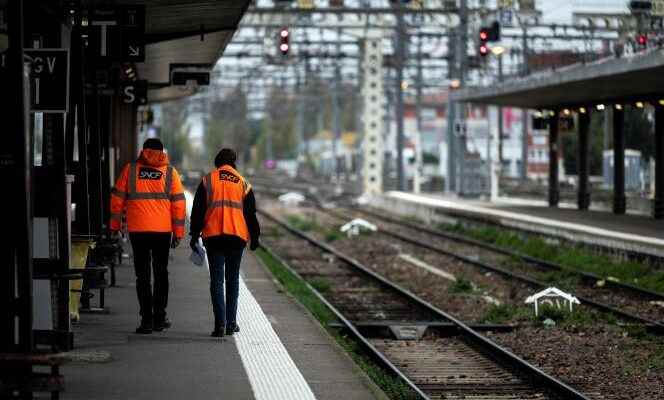Despite the end of the strike, the strike continues… Twenty-four hours after the signing of an agreement between SNCF management and unions, which put an end to the dispute launched by a collective of controllers, the movement is not weakening in this New Year’s Eve. TGV cancellations have even increased, going from 30% of traffic canceled on Friday December 23 to 40% on Saturday 24 and Sunday 25. Travelers deprived of family Christmas Eve can always take comfort in the knowledge that everything should be back to normal over the weekend. end of the New Year. But for Christmas it is too late: the trains being prepared several days in advance, they could not be rescheduled overnight.
The dispute over specific claims by controllers, also known as captains or ASCTs (agents du service commercial train), is atypical in many respects. Particularly followed for a Christmas weekend, it was worn by a group of controllers, the CNA (National Collective ASCT). As such, it marks a turning point in the history of strikes by the public railway group and illustrates what a form of social movement 2.0 could be.
How could a conflict escaping the usual institutional framework of the SNCF, including trade unions, have been able to prosper in this way until it seemed out of control in an old house accustomed to social movements? Here are some answers.
Poorly relayed alerts
“We have a social dialogue that does not work at high speed, observes, ironically, Sabine Le Toquin, national secretary of the CFDT railway workers and herself controller. It is wrong to say that the unions saw nothing coming. We have all seen the smoldering fire, the fire ready to break out. Since the Covid, the situation was no longer tenable for the ASCTs – pressure in front of customers, security incidents, mental load and lack of recognition. We alerted. We were treated to a polite listening but no real feedback, no alert to the TGV management, nor to SA SNCF Voyageurs. »
As a whole, the unions blame the social reorganization of the SNCF which accompanied the creation of the CSE (social and economic committees), replacing works councils. The new bodies have become huge “things”, managing thousands of employees over vast territories, sometimes across France. The system has led to the disappearance of 70% of staff representatives, elected local union members. “They managed to plow the ground, to alert on the problems before they aggregated and consolidated”, notes Fanny Arav, representative of the UNSA Ferroviaire. “Now, sometimes you have to travel 200 kilometers to find the one who will answer you, added Madame Le Toquin. The collectives arise from a lack of proximity with the management of the company and with the trade unions. »
You have 62.24% of this article left to read. The following is for subscribers only.
